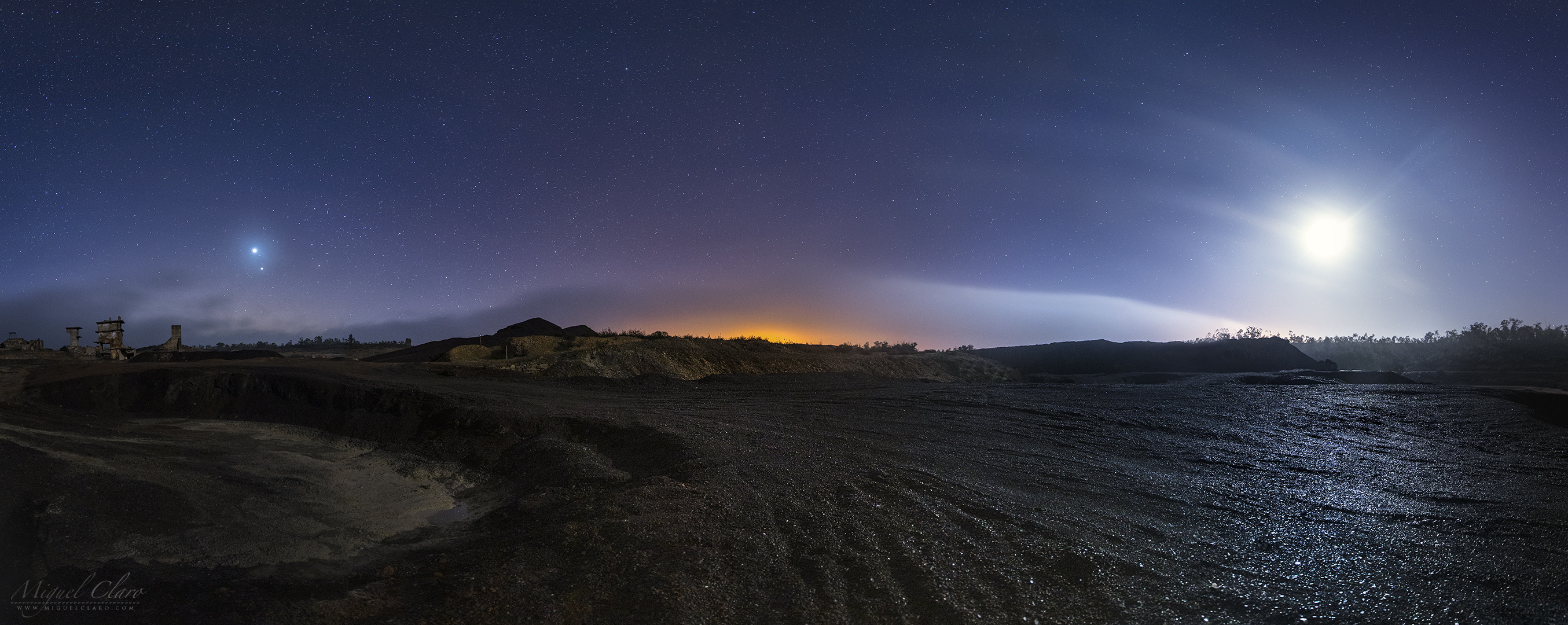Venus and Jupiter Shine Over a Dreamy Lunar Eclipse (Photo)
Miguel Claro is a professional photographer, author and science communicator based in Lisbon, Portugal, who creates spectacular images of the night sky. As a European Southern Observatory photo ambassador and member of The World At Night and the official astrophotographer of the Dark Sky Alqueva Reserve, he specializes in astronomical "skyscapes" that connect both Earth and the night sky. Join Miguel here as he takes us through his photograph "Venus and Jupiter Shining at Dawn in the Final Stage of the Lunar Eclipse."

Venus, Jupiter and the full moon light up the morning sky in this panoramic photo captured during the final stage of the "Super Blood Wolf Moon" total lunar eclipse on Jan. 21, 2019.
During a lunar eclipse, the full moon dips into Earth's shadow, temporarily darkening its surface. In this photo, the moon's face has almost fully emerged from the shadow and is returning to its usual brightness while illuminating a thin layer of clouds. In the opposite side of the photo (at left) the brightest planets of the night sky, Venus and Jupiter, are shining side-by-side.
Although Jupiter is much larger than Venus, the gas giant appears smaller and not as bright as Venus in the night sky. Situated approximately 2.5 degrees below Jupiter, Venus is also featuring a nice, bluish corona. An otherwise yellow- or red-colored planet, Venus appears surrounded by this blue glow due to the presence of water droplets in Earth's atmosphere. Thin clouds can diffract the light of bright heavenly bodies, working as a natural filter.
Related: Amazing Photos of the Super Blood Wolf Moon of 2019!

During a celestial event like a lunar eclipse, it's incredible to notice huge changes in the reflected light illuminating the ground. During the beginning of the eclipse, when the moon was not yet engulfed in Earth's shadow, the landscape was easy to distinguish under the bright moonlight. When the moon turned dark and red, the dim moonlight made my environment appear darker and discolored, too.
The image was captured in Mina de São Domingos, an old mine near Mértola in Portugal's Dark Sky Alqueva Reserve. The heaps and slag give the landscape a "lunar feeling." To create this panoramic shot, I used a Canon 6D DSLR camera to capture four 20-second exposures, with the ISO set to 4000 and with a 35mm lens, set to f/2. Shooting with a long exposure time makes planets appear bigger and brighter in the sky, although overexposing the moon can also make it difficult to see its reddish-brown color during the eclipse.
Get the Space.com Newsletter
Breaking space news, the latest updates on rocket launches, skywatching events and more!
Editor's note: If you captured an amazing astronomy photo and would like to share it with Space.com for a story or gallery, send images and comments to spacephotos@space.com.
- 'Red Worlds' Align: Mars Meets the Blood Moon in Epic Night-Sky Photo
- 'Blood Moon' Meets Star Trails in Stunning Long-Exposure Photo
- The 'Super Blood Wolf Moon' Ends with a Lunar Corona in Gorgeous Time-Lapse Photo
To see more of Claro's amazing astrophotography, visit his website: www.miguelclaro.com. Follow us on Twitter @Spacedotcom and on Facebook.
Join our Space Forums to keep talking space on the latest missions, night sky and more! And if you have a news tip, correction or comment, let us know at: community@space.com.









